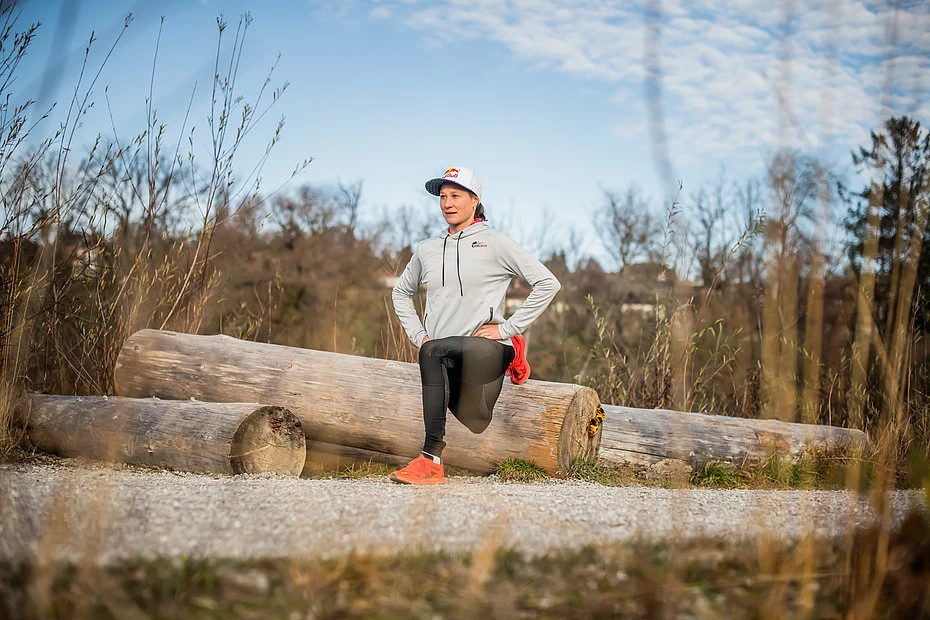Winter is here and a well-structured and prepared training program makes more sense than ever. It’s cold and dark outside – there are many excuses to skip your training for the Wings for Life World Run in May or other personal fitness goals. The time is now to build a basis on which you can later build on. For that I would like to share 10 great tips.
10 TIPS FOR A MOTIVATING AND VARIED TRAINING PROGRAM:
© Romina Amato
1. DEFINE YOUR CURRENT LEVEL OF RUNNING FITNESS
To reach your goals or to run with a plan, it’s crucial to determine where you stand. Do a 30-minute test run on an even track which you can later repeat. According to your time, you can plan your training program and set an objective for the coming Wings for Life World Run. When planning, rely on your experience or ask for help. Tip: The App Running.COACH could be the help you need.
2. SET AN OBJECTIVE
It’s always easier to exercise with training objectives. Do you want to set an objective and see how long you can run? Register for the Wings for Life World Run on 8th May 2022 and get chased by the Catcher Car. You’ll find all the information and facts about the run and its unique format here . There are more than five months left – an ideal time frame to get in shape. Come rain or shine, with or without running buddies, if I have a goal in mind, I do the trainings I had planned.
3. START SLOWLY, INCREASE THE EXTENT AND CHANGE THE INTENSITY
Start with your training slowly. Variation of intensity and duration are essential to improve your performance! With beginners or hobby runners, I often see a very small spectrum of trainings: 2 to 3 sessions per week mostly with a medium level of intensity and on the same route around the house. Use your training to discover new routes, trails, and hills in your neighbourhood. And don’t forget: «Detours increase your local knowledge».
A training program for advanced runners (marathon target time 3:30) could look like this:
4. CROSS AND WEIGHT TRAINING
Running only could increase the risk of overstressing the musculoskeletal system. That’s why you should include cross and weight training into your training program. For me, cross-country skiing is the best alternative training in winter. You train your entire body in a gentle and efficient way. If the gyms are open, it’s also great to do regular cardio workouts or exercises on an ergometer or cross-trainer.
In addition, I strongly recommend bodyweight training at least once a week, even in summer. You can easily do this at home. Tip: Visit my website where you’ll find 24 exercises that will get you through winter.
5. IT’S EASIER TO RUN TOGETHER
Running with a friend or in a group is more fun. Arrange running sessions with friends or colleagues or visit a public training session organised by a running club. To exercise together is to exercise safely. The only excuse is when you’re feeling unwell. Do you have kids? No problem! Take them with you in a buggy, on the bike or the kick scooter and discover the area together. And if the quality of your training isn’t right due to an abundance of “forced” breaks, don’t worry! You were outdoors and you all got some fresh air.
6. CHECK AND ADJUST
Check your level of running fitness from time to time on your test track. Getting an update on your level every 6 to 8 weeks is helpful and very exciting. If you feel like it, you can also record and evaluate your run with a sports watch (e.g., Garmin). This way, you can always compare your times and even look at statistics. Based on your current level, you can also adjust your training.
7. EATING AND DRINKING
Have your last big meal 3 to 4 hours prior to your training. It’s not so great to run with a full stomach. If you like to eat something just before your run or feel a little hungry, eat a banana or power bar 30 minutes before you start.
Don’t forget to drink regularly throughout the day. Especially in an everyday office life, this is often forgotten or underestimated. Prior to your training, a Red Bull can give you a little more power and the necessary kick. Diluted with water, Red Bull is also a great sports drink during your training session.
8. RUN ON AN EMPTY STOMACH
If you want to try something new or wish to integrate your training even better into your everyday life, we recommend running on an empty stomach: start your session in the morning, just after getting up. Just start running, without having eaten anything solid yet. At the beginning, your body will clearly show you that it doesn’t agree, and it will be hard. That’s why it’s important to start with short, regenerative workouts that last no more than 30 to 40 minutes. You’ll see that your body will quite quickly get used to functioning even without additional energy supply. It will improve from training session to training session, and soon you will be able to do longer workouts easily. With this fasting workout you consciously train your lipo metabolism.

© Romina Amato
9. REGENERATION
Enjoy your training-free time. It’s important to plan at least one day off in your schedule to give your body enough time to recover. It’s also crucial to get enough sleep in order to stay fit in your everyday life.
10. HEALTH
Running regularly boosts the immune system. Fresh air and active exercise will strengthen your immune system and make you less susceptible to illness. But if you have mild symptoms such as coughing or a sore throat, it’s recommended not to work out and go for a walk instead. If you have a fever or the flu, it’s very important to stop working out and rest until you get better. After recovery, you should resume your training slowly and cautiously.

